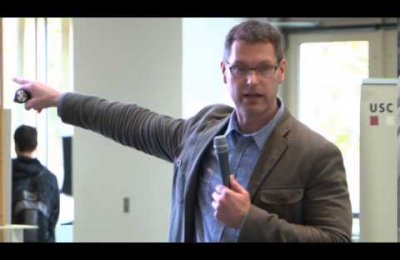The PR/communication industry, boosted by increased budgets and staffing, is enjoying a healthier period and recovering from the recession, according to the eighth Public Relations Generally Accepted Practices (GAP) Study, which is published on a biennial basis by the Strategic Communication and Public Relations Center (SCPRC) at the USC Annenberg School for Communication and Journalism.
In 2014, 40% of public company respondents expected their PR/Communication budgets to increase over 2013 levels, while 25% expected no change and 35% expected decreases. In 2013, 60% experienced budget increases over 2012, while 17% experienced no change and 23% experienced decreases.
Consistent with the improved budget scenario, the 40% of respondents experiencing staff growth in 2014 over 2013 outnumbered those expecting flat or reduced staff size; 38% reported staff growth in 2013 over 2012. Industries in which the majority of respondents expected staff growth in 2014 include energy, natural resources, finance, insurance, manufacturers/marketers of B-to-B products, professional services, retailing, and transportation/shipping.
In addition to reporting budget and staff growth, the study found that creating spreadable content is a top priority for the PR/Communications industry. According to the study: “The popularity of creating spreadable content, especially video, reinforces the belief that organizations are now their own media channel.”
The GAP study, generally considered to be the largest, most comprehensive of its type, also noted that the “use of Twitter as a corporate communication platform has grown dramatically. In contrast, the use of Facebook over the same period has remained flat.”
For the first time ever in the history of the GAP studies the most commonly cited rationale for working with PR and communications agencies was creative thinking, with, according to the study, the perennial winner – additional arms and legs – coming in second. “Objective and independent counsel” and “strategic insight” clustered just behind.
In addition, GAP VIII closely examined three indicators of PR/Communication's perceived role and contribution: participation in organizational strategic planning, the extent to which PR-related recommendations are taken into consideration by senior management, and the function's perceived contribution to financial success.
Almost 40% of respondents report that PR/Communication plays an active role in organizational strategic planning, 59% agree that PR/Communication's recommendations are taken seriously by senior management, while 44% agree that their senior leadership believes PR/Communication contributes to financial success.
These findings are important, say the study’s authors, because each of these three indicators strongly correlates with many positive outcomes and descriptors used by participants to describe their organizations, including "successful," "good external reputation," "innovative," and "proactive," among others.
Analyzing the results of the multiple GAP studies through the years, GAP authors see a trend: “Many companies are giving communication and reputational considerations a far greater role in organizational planning and decision making than was previously the case, and benefiting from that change. In this new environment PR/Communication is seen as a strategic asset affecting enterprise-wide policy and behavior, rather than in its far more limited, historical role as a purely tactical, secondary and largely marketing-driven function.”
Professor Jerry Swerling, director of the PR and Communication Center, emphasized: "While correlation doesn't prove causality, patterns that consistently link certain practices with certain positive outcomes, over multiple studies, shouldn't just be ignored. So, while we wouldn't say 'PR involvement in strategic planning leads to a better external reputation,' we are very comfortable saying 'Organizations in which PR is involved in strategic planning are more likely to have better external reputations due to a matrix of interrelated factors.' One of our goals is to better understand that matrix."
A total of 347 senior communicators completed all 50 questions in the study, which was supported by all four of the leading U.S. professional associations in the field: Arthur W. Page Society, Institute for Public Relations (IPR), International Association of Business Communicators (IABC) and Public Relations Society of America (PRSA). GAP VIII was also supported by a financial grant from Edelman.
Download the GAP VIII report for free.








